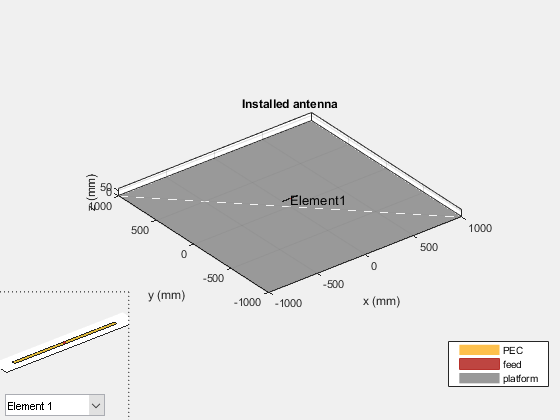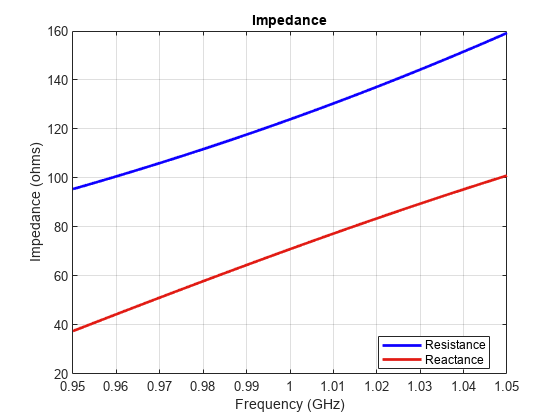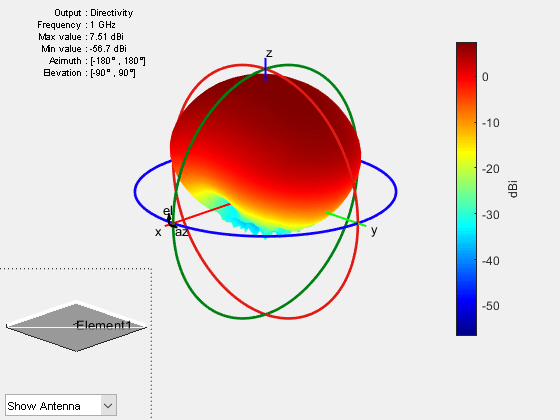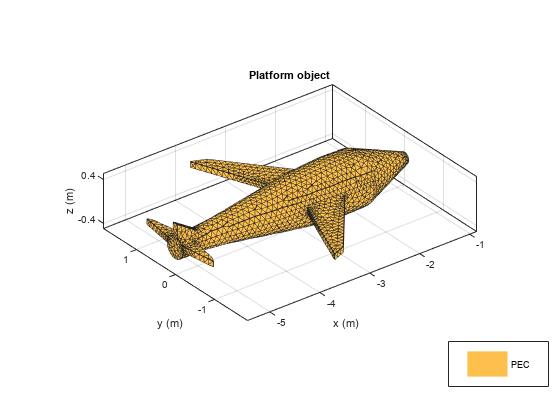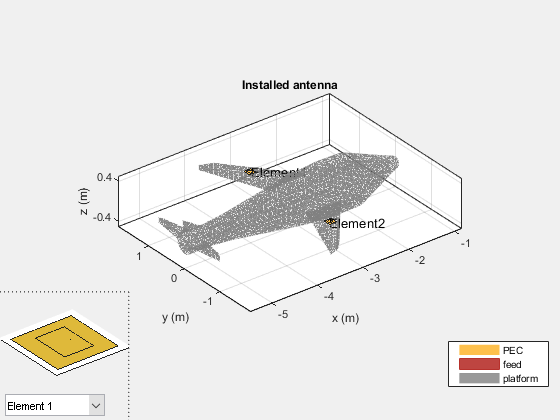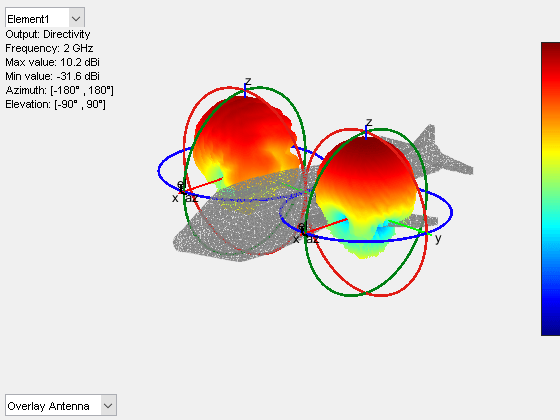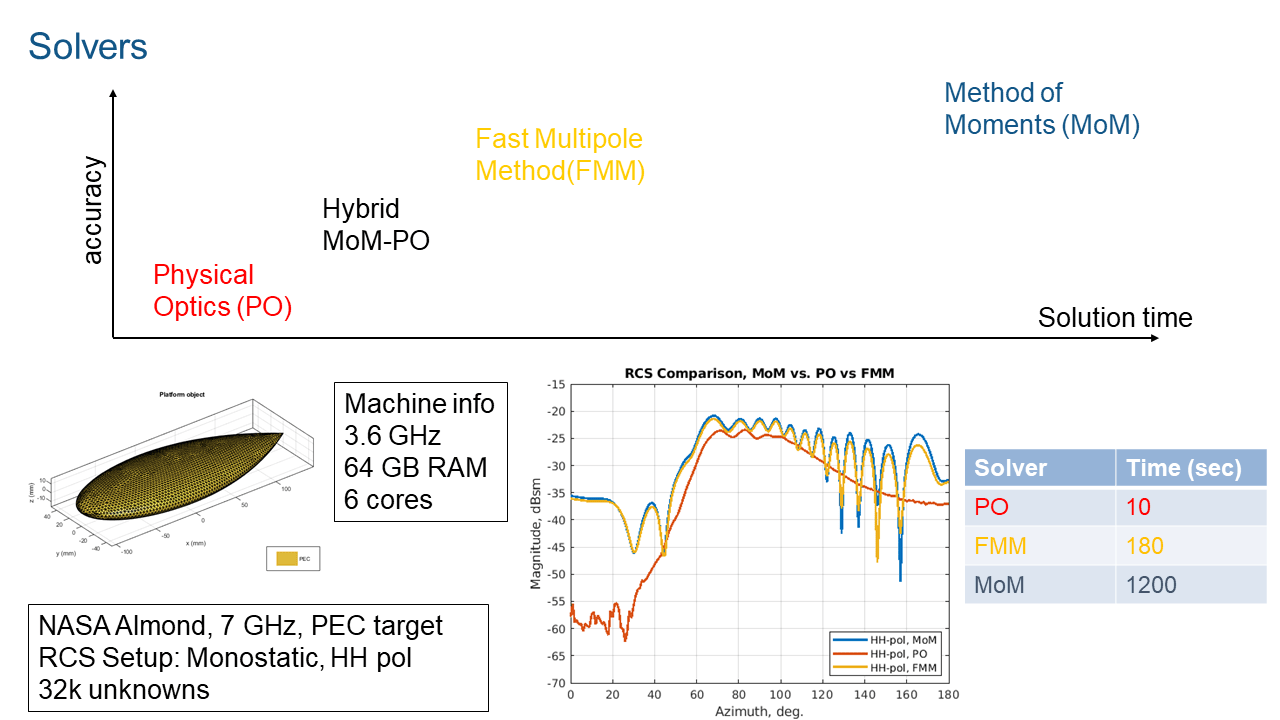installedAntenna
Installed antenna setup
Description
The installedAntenna object creates an installed antenna
setup that enables you to mount antennas on a platform for analysis.
Installed antenna analysis involves an electrically large structure called a platform. Around this platform, different antenna elements are placed. You can analyze the effects of the platform on the antenna performance. Installed antenna analysis is commonly used in aerospace, defense, and automotive applications. The best examples of a platform in these applications are an aircraft, a ship, and an automobile respectively.
Another common application of installed antenna analysis is to determine the interference of different antennas placed on a large platform.
Note
installedAntenna only models pure metal structures.
Creation
Description
ant = installedAntenna
ant = installedAntenna(PropertyName=Value)PropertyName is the property name and
Value is the corresponding value. You can specify
several name-value arguments in any order as
PropertyName1=Value1,...,PropertyNameN=ValueN.
Properties that you do not specify, retain their default values.
For example, p = platform(FileName='plate.stl'); ant =
installedAntenna(Platform=p) uses the geometry in the
'plate.stl' file to create a platform for antenna
installation and analysis.
Output Arguments
Properties
Object Functions
axialRatio | Calculate and plot axial ratio of antenna or array |
beamwidth | Beamwidth of antenna |
charge | Charge distribution on antenna or array surface |
current | Current distribution on antenna or array surface |
correlation | Correlation coefficient between two antennas in array |
efficiency | Calculate and plot radiation efficiency of antenna or array |
EHfields | Electric and magnetic fields of antennas or embedded electric and magnetic fields of antenna element in arrays |
feedCurrent | Calculate current at feed for antenna or array |
impedance | Calculate and plot input impedance of antenna or scan impedance of array |
info | Display information about antenna, array, or platform |
mesh | Generate and view mesh for antennas, arrays, and custom shapes |
meshconfig | Change meshing mode of antenna, array, custom antenna, custom array, or custom geometry |
msiwrite | Write antenna or array analysis data to MSI planet file |
pattern | Plot radiation pattern of antenna, array, or embedded element of array |
patternAzimuth | Azimuth plane radiation pattern of antenna or array |
patternElevation | Elevation plane radiation pattern of antenna or array |
patternSystem | Visualize radiation patterns of multiple antennas installed on platform |
peakRadiation | Calculate and mark maximum radiation points of antenna or array on radiation pattern |
rcs | Calculate and plot monostatic and bistatic radar cross section (RCS) of platform, antenna, or array |
returnLoss | Calculate and plot return loss of antenna or scan return loss of array |
show | Display antenna, array structures, shapes, or platform |
solver | Access FMM solver settings for electromagnetic analysis |
sparameters | Calculate S-parameters for antenna or array |
stlwrite | Write mesh information to STL file |
vswr | Calculate and plot voltage standing wave ratio (VSWR) of antenna or array element |
Examples
Algorithms
Version History
Introduced in R2019a
